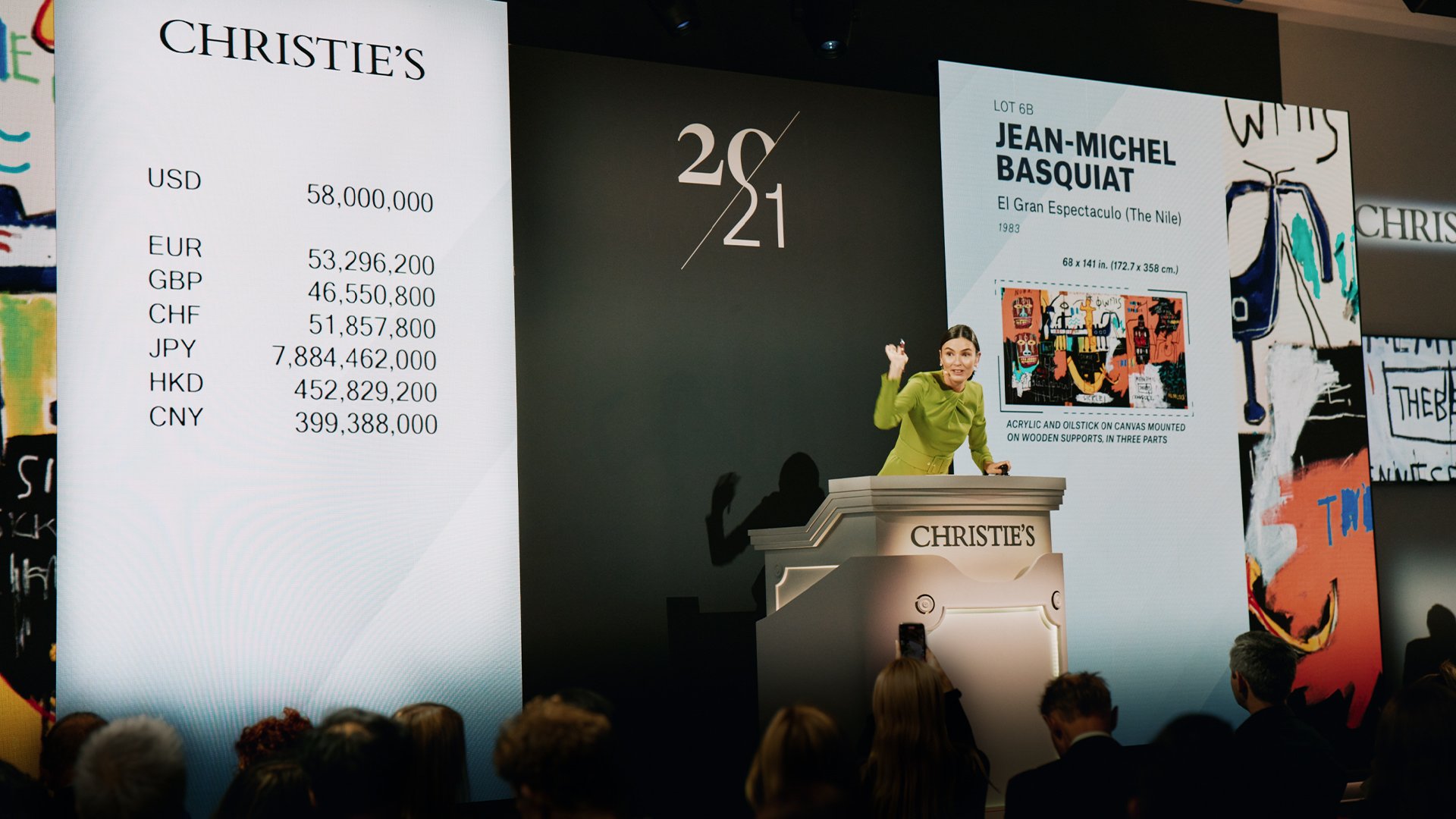
Christie’s CEO Guillaume Cerutti and a host of other auction executives from its worldwide team tried to put a positive spin on the company’s results for the first six months of 2023 in a conference call with reporters this morning—despite the immediate, if grudging, acknowledgement that global sales, at $3.2 billion (£2.5 billion), were down 23 percent from the comparable period in 2022.
Last year, the sales tally through the end of the second quarter was $4.1 billion (£3.3 billion), an 18 percent increase on a U.S. dollar-basis compared with the first half of 2021.
The house also reported another significant drop in the first half: in private sales, which clocked in at $484 million (£388 million), a drop of 19 percent. Last year’s comparable total was roughly $600 million, which also marked a drop from the 2021 level of $850 million.
The house highlighted what it said were bright spots in relevant markets. Those included the influx of newer, younger buyers; the growing impact of online bidders; and the stellar performance of categories such as rare jewels, wine, and handbags. Christie’s also cited a “superior” sell-through rate of auctions at 87 percent, which it said was unchanged from last year.
“After two exceptional years, Christie’s adapted to a different market in the first half of 2023 as a consequence of the more challenging macro environment,” Cerutti said. “In this new landscape, our performance remains strong with a continuing influx of new clients and more global participation online—almost 80 percent of all bids at Christie’s were placed online this year to date.”
Of course, it must be noted that 2022’s first-half offerings set an extraordinarily high bar, including a slew of unprecedented consignments, ranging from the famous collection of former Swiss dealers and connoisseurs Thomas and Doris Ammann, to that of tastemaker Anne Bass, to the Surrealist trove of art assembled by New York fashion executives Rosalind Gersten Jacobs and Melvin Jacobs.
Consider that a single work from the Ammann collection, Andy Warhol’s Shot Sage Blue Marilyn (1964), fetched $195 million after fees at Christie’s in New York last May, becoming the most expensive 20th-century artwork ever sold. The most valuable painting sold in the first half of 2023 was Jean-Michel Basquiat’s El Gran Espectaculo (The Nile) at $67 million.
The installation of “A Century of Art: the Gerald Fineberg Collection” at Christie’s. Photo: Katya Kazakina
The sum for Shot Sage Blue Marilyn is roughly on par with the entire collection of Gerald Fineberg, which was the most valuable single-owner collection sold at Christie’s in the first six months of 2023, and achieved $210 million. The stellar offerings of the first Fineberg sale in New York this May got caught in the crossfire as market jitters and macroeconomic factors including rising interest rates conspired to produce disappointing results.
Nonetheless, Christie’s cited “spectacular” growth in digital engagement, noting that nearly 80 percent of bids in all auctions are now placed online, skyrocketing since 2019, when the rate was 45 percent.
Christie’s leaders also pointed to a continued influx of new and younger buyers, saying that 31 percent of all buyers are new to Christie’s with strong engagement from Millennials (38 percent of all new buyers were Millennials or younger).
Looking at the regional makeup of buyers also proved interesting. Business from the Americas was down slightly, accounting for 39 percent of the total compared with 44 percent in the previous year, while demand from Asia accounted for 26 percent, up from 22 percent the previous year but still down considerably from 40 percent in 2021.
Christie’s said the first half of 2023 marked the highest ever such total for luxury goods with strong sales of watches, jewels, handbags, and wine landing at $590 million, a substantial 43 percent increase year over year.
More Trending Stories:
An Israeli First-Grader Stumbled on a 3,500-Year-Old Egyptian Amulet on a School Trip